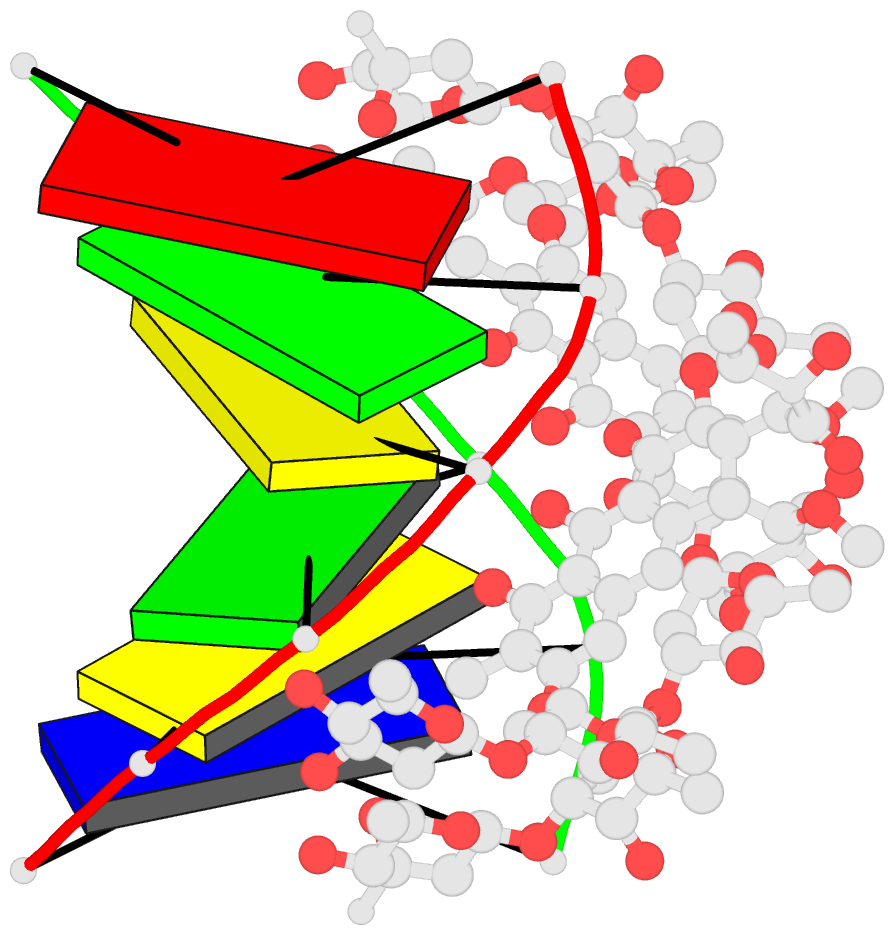Summary information and primary citation
- PDB-id
-
146d;
SNAP-derived features in text and
JSON formats
- Class
- DNA
- Method
- NMR
- Summary
- Solution structure of the mithramycin dimer-DNA
complex
- Reference
-
Sastry M, Patel DJ (1993): "Solution
structure of the mithramycin dimer-DNA complex."
Biochemistry, 32, 6588-6604.
doi: 10.1021/bi00077a012.
- Abstract
- We have characterized the NMR parameters for the
complexes formed by the Mg(2+)-coordinated mithramycin
dimer with self-complementary d(T-G-G-C-C-A) and
d(T-C-G-C-G-A) duplexes. The solution structure of the
latter complex has been determined using a combined
NMR-molecular dynamics study including relaxation matrix
refinement. The Mg(2+)-coordinated mithramycin
dimer-d(T-C-G-C-G-A) complex exhibits a 2-fold center of
symmetry with the divalent cation coordinated aglycons
positioned opposite the central (G3-C4).(G3-C4) segment
such that the aglycon C8 hydroxyl oxygens form symmetrical
sequence-specific hydrogen bonds to guanine amino protons
in the complex. The C-D-E trisaccharide segments of each
monomer in the mithramycin dimer adopt extended
conformations, are positioned inside the minor groove, and
are directed toward either end of the duplex. The C-D
saccharide component of one monomer and the aglycon of the
other monomer in the mithramycin dimer share a widened
minor groove with the hydrophobic edges of the C and D
sugars interacting with individual strands of the duplex.
The E-sugar ring is positioned in the floor of the minor
groove, and its hydroxyl-bearing face interacts with both
strands of the duplex through hydrogen-bonding and
hydrophobic intermolecular interactions. The A-B
disaccharide and the hydrophilic side chain form
intermolecular contacts with the sugar-phosphate backbone
in the complex. The antiparallel alignment of divalent
cation coordinated monomers in the mithramycin dimer
results in the two outwardly directed C-D-E trisaccharide
segments generating a right-handed continuous
hexasaccharide domain that spans six base pairs in the
minor groove of the duplex. The solution structure of the
mithramycin dimer-DNA complex reported in this study and
the solution structure of the chromomycin dimer-DNA complex
reported previously [Gao, X., Mirau, P., & Patel, D. J.
(1992) J. Mol. Biol. 223, 259-279] show global
similarities, as well as local differences that are of
interest. All four nucleotides in the tetranucleotide
segment of the duplex centered about the sequence-specific
(G-C).(G-C) step adopt A-DNA sugar puckers and glycosidic
torsion angles in the chromomycin dimer-DNA complex, while
only the central cytidine adopts an A-DNA sugar pucker and
glycosidic torsion angle in the mithramycin dimer-DNA
complex.(ABSTRACT TRUNCATED AT 400 WORDS)





